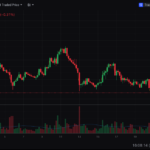The Pattern Day Trading (PDT) rule has long been a controversial regulation for active U.S. traders. Designed to limit excessive risk-taking, the rule sets specific requirements for accounts that engage in frequent day trading. Recently, discussions around potential changes to the PDT rule have gained momentum, raising questions about how such adjustments could affect retail investors.
What Is the Pattern Day Trading Rule?
The PDT rule, established by FINRA (Financial Industry Regulatory Authority), applies to margin accounts in the U.S.
- Definition: A trader is classified as a “pattern day trader” if they execute 4 or more day trades within 5 business days, provided those trades make up more than 6% of the account’s total activity.
- Requirement: To continue day trading freely, an account must maintain a minimum equity balance of $25,000. Falling below this threshold restricts further day trades.
Why the Rule Exists
The PDT rule was introduced to protect retail traders from excessive risk. Day trading with small accounts can lead to rapid losses, especially when using margin. Regulators aimed to ensure that traders had enough capital to withstand volatility.
Criticism of the PDT Rule
Many traders argue the rule is outdated:
- Barrier to Entry: The $25,000 requirement prevents smaller investors from actively day trading.
- Global Gap: Other countries do not impose such restrictions, leaving U.S. traders at a disadvantage.
- Flexibility: Swing traders and short-term investors often get caught by the rule even if they are not engaging in high-frequency trading.
Potential Changes on the Horizon
While no official updates have yet been passed, industry discussions and lobbying efforts suggest the PDT rule may face adjustments:
- Lowering the $25,000 Threshold: Proposals to reduce the capital requirement to levels like $10,000.
- Adjusting Definitions: Modifying what counts as a “day trade” to exclude certain same-day transactions.
- Alternative Safeguards: Using risk-based assessments or mandatory education instead of blanket equity requirements.
What Traders Should Do Now
- Know the Rules: If you trade on margin in the U.S., track your activity to avoid being flagged.
- Use Cash Accounts: One workaround is trading in a cash account, which is not subject to PDT but limits instant re-use of funds.
- Stay Updated: Keep an eye on FINRA announcements and broker updates, as any rule changes could significantly impact trading strategies.
Conclusion
The Pattern Day Trading rule has shaped U.S. retail trading for decades. While intended as a safeguard, it has also been a barrier for smaller traders. With talks of possible rule changes, the landscape of day trading could shift—potentially opening new opportunities for active investors.
📌 Takeaway: Whether or not the PDT rule changes, risk management should remain at the core of every trading strategy.







